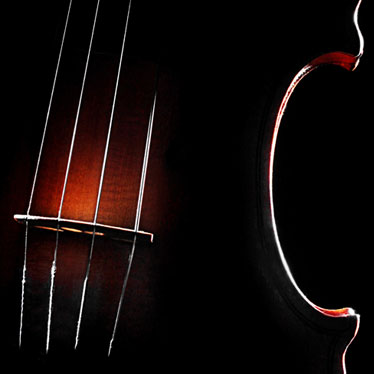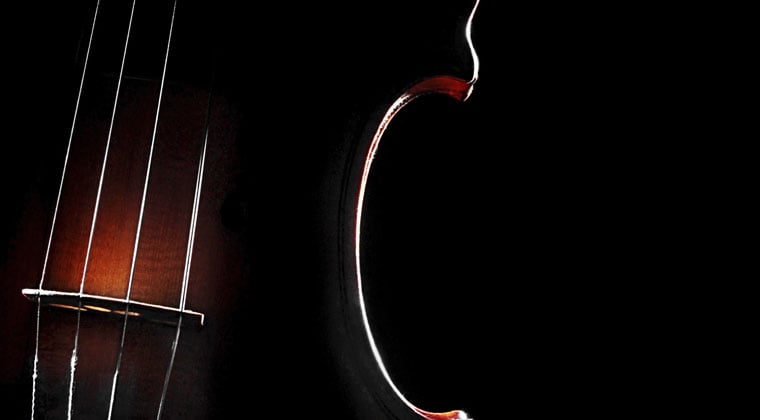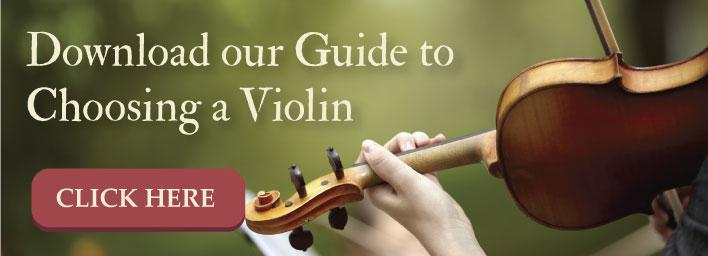What To Consider When Purchasing A Violin For The Student Musician

 Buying a violin for a student musician is challenging if you’ve never played before. There are many factors that determine a violin’s worth, and people who aren’t familiar with the nuances of this popular instrument are sometimes confused when they see such a wide range of prices.
Buying a violin for a student musician is challenging if you’ve never played before. There are many factors that determine a violin’s worth, and people who aren’t familiar with the nuances of this popular instrument are sometimes confused when they see such a wide range of prices.
Student musicians need the encouragement that comes from playing on an instrument that sounds great and is properly sized so that it doesn’t place unnecessary strain on their bodies. Without great playability, it’s easy for students to become disenchanted with the violin and depressed—they think that they don’t have what it takes to make progress. However, nothing is father from the truth.
Anyone can learn to play the violin, but having a great quality instrument makes it so much more enjoyable. You can make an informed decision by considering these aspects.
Outfits vs. Buying Separately
Student musicians can benefit from buying an outfit, rather than buying their violin, bow, and case separately. New manufacturing techniques that combine state-of-the-art construction with a hands-on fitting out process (performed by a qualified luthier), provide affordable, yet high-quality buying options for student musicians.
Outfits help making buying simpler. You don’t have to worry about purchasing a case, or learning the specifics about the differences in bows. A quality outfit offered by a name Brand will include these items and help get the student musician off on the right foot.
Craftsmanship
There is nothing more discouraging than trying to learn to distinguish tonal variations on a poorly crafted violin. Look for these quality clues when making your instrument purchase:
- Tightly fitted seams—no creaking or noise when you gently push down on the table (top) or sides of the violin
- Good symmetry—the violin is evenly proportioned and the neck and fingerboard is straight/in-line with the body
- Wood pieces—spruce table, maple ribs (sides), neck, and back, and ebony (or another type of wood) fingerboard and chin rest
- Great Sound—play it before you buy it! A new instrument will develop richer tones and greater resonance the more you play it, but a poorly crafted violin will sound tinny or harsh, or otherwise inadequately project sound
One Size Doesn’t Fit All
Probably the most important aspect to consider when choosing a violin for the student musician is determining the correct size. Violins are available in eight sizes, but playing on an instrument that is too big can cause serious physical injuries. In addition to neck, wrist, and spinal damage, it’s very hard to achieve proper form with a violin that is too large, and student progress will be hindered.
Although it’s common to purchase a larger size violin, believing that the student will grow into it, don’t make this mistake. It’s better to rent a smaller size violin for six months or a year, than to have a student struggling to play an instrument that is simply too big. Some basic sizing techniques include:
Start by making a basic measurement. With the violin held in the playing position, check to see if the student can wrap his or her hand around the scroll with the fingers resting into the peg box. If the student has to contort to reach the scroll, or if placing the fingers in the peg box means that the student’s arm is straight, try a smaller size violin.
With the violin in the proper playing position, look at the student from the back. A properly sized violin should not be larger than the student’s shoulder. And, check for finger reach. With the first finger on the E string, have the student put his pinky on the G string, and then try to reach the fourth finger D on the G string. If the student’s hand is ridged and this is difficult, try a smaller instrument.
Finally, see if the student can balance the violin (easily support its weight) by holding it just with their head. As long as the weight doesn’t cause fatigue, you’ve probably found the right size.
Rely on the Experts
There are many people who are ready and willing to assist your buying decision. Music instructors, instrument dealers and luthiers love to share their wealth of knowledge, and want to encourage beginners. Their advice is invaluable because they will be able to make judgements according to your particular student’s needs.
Choosing a violin for a student musician can be tricky, but when you take time to make sure that you’ve selected the correct size, quality crafted model, you can rest assured that the violin you choose will offer many years of enjoyable playing. And, that your student’s progress will be a fun, fulfilling adventure.


